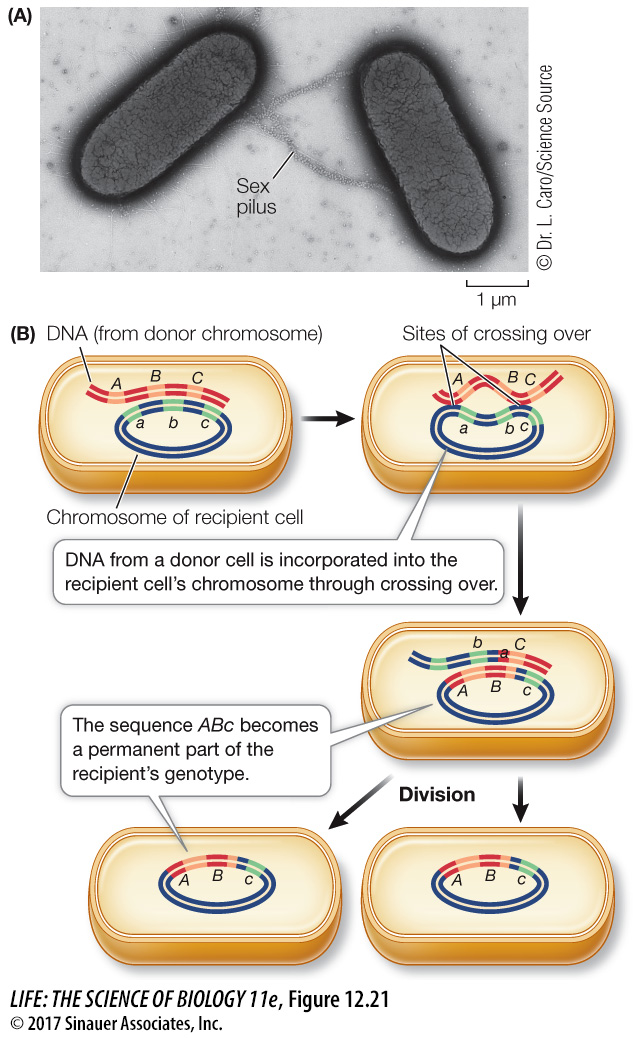Bacteria exchange genes by conjugation
To illustrate the kind of experiment that led to the discovery of bacterial DNA transfer, consider two strains of the bacterium E. coli with different alleles for each of six genes. One stain carries the dominant (wild-
ABCdef and abcDEF
where capital letters indicate wild-
When the two strains are grown together in the laboratory, most of the cells produce clones. That is, almost all of the cells that grow have the original genotypes. However, out of millions of bacteria, a few occur that have the genotype
ABCDEF
How could these completely wild-
Electron microscopy shows that genetic transfers between bacteria can happen via physical contact between the cells (Figure 12.21A). Contact is initiated by a thin projection called a sex pilus (plural pili), which extends from one cell (the donor), attaches to another (the recipient), and draws the two cells together. Genetic material can then pass from the donor cell to the recipient through a thin cytoplasmic bridge called a conjugation tube. There is no reciprocal transfer of DNA from the recipient to the donor. This process is referred to as bacterial conjugation.

Once the donor DNA is inside the recipient cell, it can recombine with the recipient cell’s genome. In much the same way that chromosomes pair up, gene for gene, in prophase I of meiosis, the donor DNA can line up beside its homologous genes in the recipient, and crossing over can occur. Some of the genes from the donor can become integrated into the genome of the recipient, thus changing the recipient’s genetic constitution (Figure 12.21B). When the recipient cells proliferate, the integrated donor genes are passed on to all progeny cells.